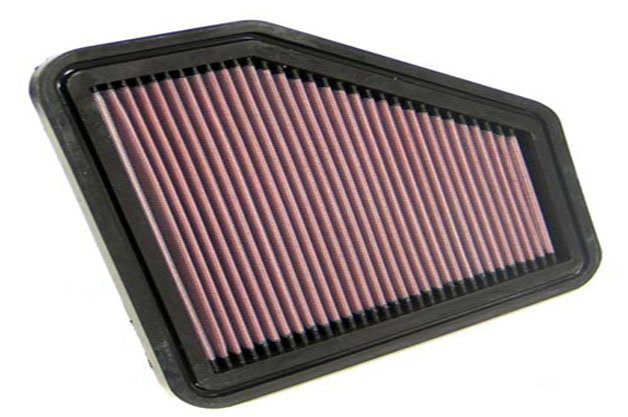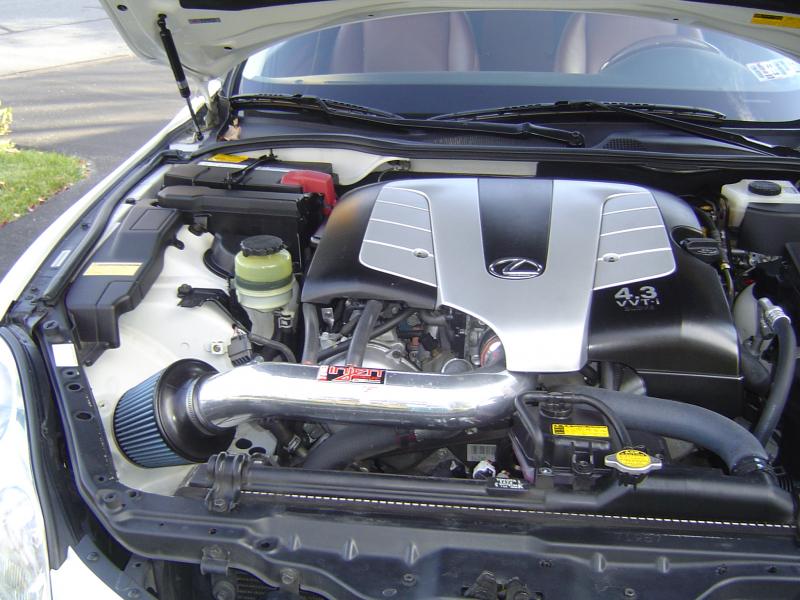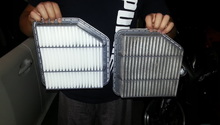Lexus IS/GS: Air Intake Modifications
A proper intake system will maximize the air inlet to your vehicle's motor, allowing it to produce horsepower while keeping engine temperature cool.
This article applies to Lexus IS, GS (2005-2014).
When it comes to performance cars, installing an aftermarket intake is one of the first steps on the road to performance. On the Lexus IS and GS however, the stock air box is already extremely efficient, which means installing and aftermarket part isn't likely to increase horsepower noticbaly. That said, there are other reasons for upgrading the intake system aside from power. Looks, sound and ease of maintenance are all good reasons to upgrade. Following are some of the more popular and common intake modifications for the Lexus IS and GS.
Intake Modifications
High Flow Filter

DIY Cost – ~$50
Professional Cost – 1 hour labor
Skill Level – Moderately easy; requires basic hand tools to remove old Air PCV and MAF hoses and connectors.
This intake modification really serves more of a maintenance "upgrade" rather than a modification. This is a great alternative for someone looking to maintain good performance while getting the most out of a maintenance upgrade. This is the "best bang for your buck" type of upgrade and a great alternative to the stock air filter. Fuel gains are relatively the same as stock. Aftermarket filters generally have a couple of added bonuses.
- They will have a higher airflow than the stock air filter, which may lead to small horsepower gains. Like any other intake modification, the gains (if any) will likely be imperceptible.
- The real benefit to cotton-type air filters are the fact that they're reusable. When the filter is dirty, just need to wash it out and re-oil it. These will easily last the life of the vehicle.
Cold Air/Factory Intake


DIY Cost – Aftermarket: $250
Professional Cost – 1-2 hours labor
Skill Level – Moderately easy; requires basic hand tools to remove old Air PCV and MAF hoses and connectors.
In the case of the Lexus IS and GS, the stock intake is already a cold-air intake, which makes this modification a moot point. Typically, they're considered one of the best, most inexpensive performance upgrades. Colder air is more dense and this allows for a better air to fuel ratio. This in turn allows better combustion resulting in more power. Replacing the factory unit with an after market unit won't improve horsepower much at all. What it will do is increase the amount of induction noise from the engine bay and make it look nicer.
Short Ram Intake

DIY Cost – $99-$250
Professional Cost – 1-2 hours labor
Skill Level – Moderately easy; requires basic hand tools to remove old Air PCV and MAF hoses and connectors.
Although these can be bought for relatively cheap, they are the worst option for improving performance through intake modification. The filter sucks in hot air from around the engine bay which will have a negative effect on horsepower. On hotter days, you might see a slight increase in miles per gallon due to the engine making less power. Also, a short ram intake will increase the amount of induction noise in the cabin due to an exposed filter element and shorter piping.
Related Discussions
- K&N High Flow Filter Review - ClubLexus.com
- Short Ram Intake Review - ClubLexus.com
- Cold Air Intake Reviews - ClubLexus.com






